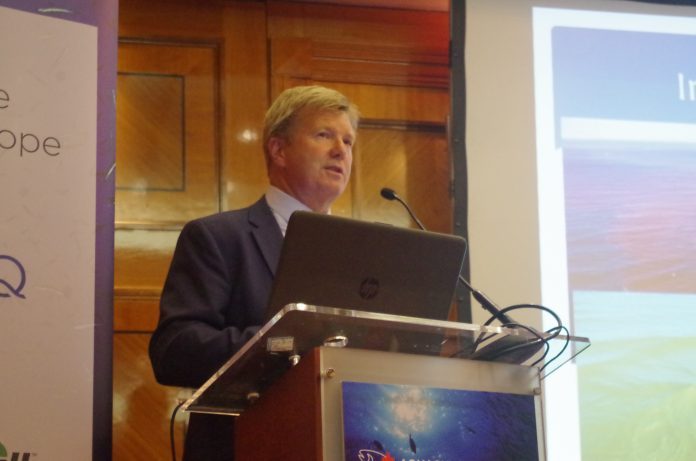Geir Myre, global head of aquaculture insurance at XL Catlin, was talking at the Aquaculture Innovation Summit in London today.
Salmonbusiness was attending the summit which focuses on showcasing and supporting innovation and sustainability initiatives in three key areas of aquaculture: farm management, nutrition and health.
XL Catlin’s aquaculture department is currently based in Bergen, Norway where it offers offer bespoke coverage for fish farms. The firm has been bought by the world’s second-largest insurance firm, AXA headquarters.
On RAS salmon farms, Mr Myre said that they could be quite risky and that “some insurers don’t want to insure those kind of farms.” One reason was that fish can be more easily completely wiped out in recirculated aquaculture systems, often linked to the release of hydrogen sulphide or H2S.
The risk is evolving around climate change on the oceans and Mr Myre said that salmon farmers should prepare for more unpredictable weather and temperatures as well as more algae bloom.
During Chile’s algae bloom crisis in 2016 insured losses were estimated at about $120 million to $80 million uninsured – the largest ever loss experienced by the aquaculture insurance market. These losses were exacerbated by the high concentration of fish farms in one area.
As well as buying insurance coverage, there are risk management steps that fish farmers can take to help mitigate the threats posed by climatic events such as biosecurity as well as medicine, water quality and genetics.
On new offshore super farms, Myre wondered about the effect of big waves had on the high concentration of values, plus how to treat fish during disease outbreaks as well as lice treatment on these prototype structures.


